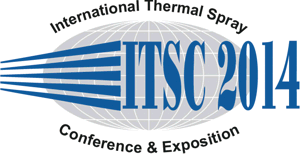
|
3617 |
|
Effect of substrate temperature on splat formation process and coating adhesion strength in plasma spraying |
|
Kun Yang* / Guangdong Institute of New Materials, China Mashahiro Fukumoto / Toyohashi University of Technology, Japan Min Liu/ Guangzhou Research Institute of Non-ferrous Metals, China Kesong Zhou/ Guangzhou Research Institute of Non-ferrous Metals, China Changguang Deng/ Guangzhou Research Institute of Non-ferrous Metals, China |
|
A single splat is the unit cell of the thermal spray coating, thus the flattening nature of the individual splat can strongly affect the coating properties. In order to understanding the effect of substrate temperature on splat flattening behavior and coating performances in thermal spraying, Cu powders were thermally sprayed onto AISI304 substrates held at various temperatures using atmospheric plasma spraying (APS), all the other spraying parameters were kept in constant. Individual splats and coatings were collected on the substrates under designated conditions. The splat characterizations were evaluated using optical microscope (OM), scanning electron microscope (SEM) and focused ion beam (FIB), respectively. The microstructures and adhesion strength of coatings were also examined. The shapes of the splat changed transitionally from splash type to disk-shaped ones with the increase of substrate temperature. A typical fine grain composed layer was found at splat-substrate interface, in particular, when the splat was collected on the substrate held at high temperature, which might generate by the initial solidification during the splat flattening process. This layer could induce the rapid decrease of droplet viscosity at bottom surface and promoted the formation of disk-shaped splat. Meanwhile, the coating adhesion strength increased gradually with the increase of substrate temperature, which has a well agreement with the individual splat morphologies under different designations. Due to the close relation between coating performances and splat shapes, the coating properties could be predicted, and the thermal spraying process could be optimized accordingly |